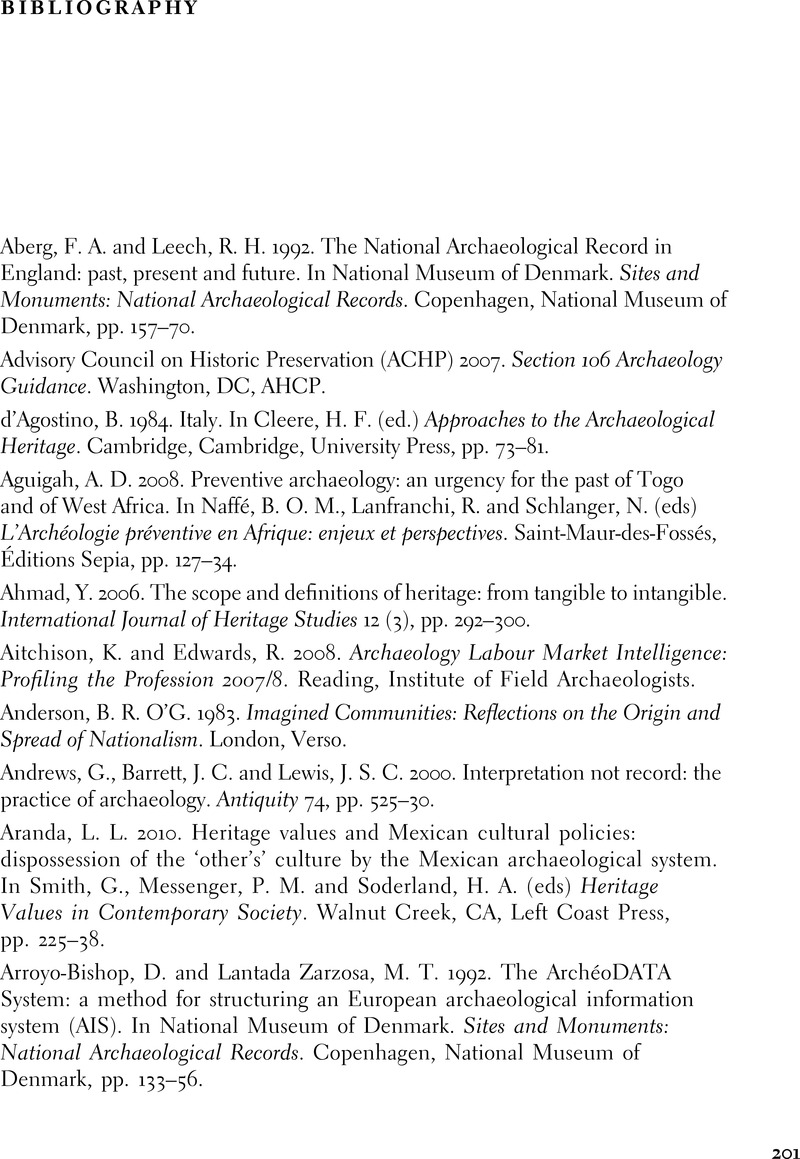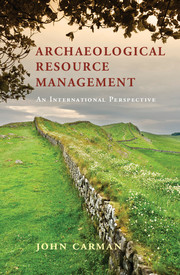Bibliography
Published online by Cambridge University Press: 05 September 2015
Summary

- Type
- Chapter
- Information
- Archaeological Resource ManagementAn International Perspective, pp. 201 - 234Publisher: Cambridge University PressPrint publication year: 2015

